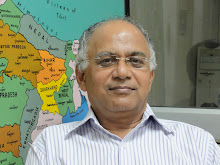JUST A GLANCE IS NEEDED TO DIAGNOSE CANCER
Yesterday I described the strategy IBM followed to teach their computer to translate texts from one language to another. The technique basically was to tell the computer what a good translation looks like. They taught it also to diagnose cancer – well, at least to distinguish a malignant tumour from a non-malignant one.
How did they do it?
They fed photos of tumours into the computer – 3000 of them. Interestingly, 2800 of the photos were of tumours that were not malignant and 200 of malignant ones, i.e., cancerous ones. The computer has learned what a “not-dangerous” tumour looks like and what a dangerous one looks like.
The interesting fact is the difference in the number of the photos of the bad and the good they used – 2800 good and 200 bad. It looks to me like these scientists are disciples of Don Bosco, whose outlook was always totally positive. He believed in what he called the “Preventive System” : Fill the minds of students with what is good and make this good so much fun that they will not even think of the bad. Fill the days of children so full of fun derived from good activities that they do not even feel tempted to the bad.
That's the best trick of good education whether at school or in the family!
